Next stop was Isla Bartolomé with its panoramic summit that sits at 114 m (375 ft) above the sea.
This is the view from Pinnacle Point (aptly at the summit) and has been seen in several movies, notably with Russel Crowe in the film adaptation, “Master and Commander: the Far Side of the World” Movie Clip
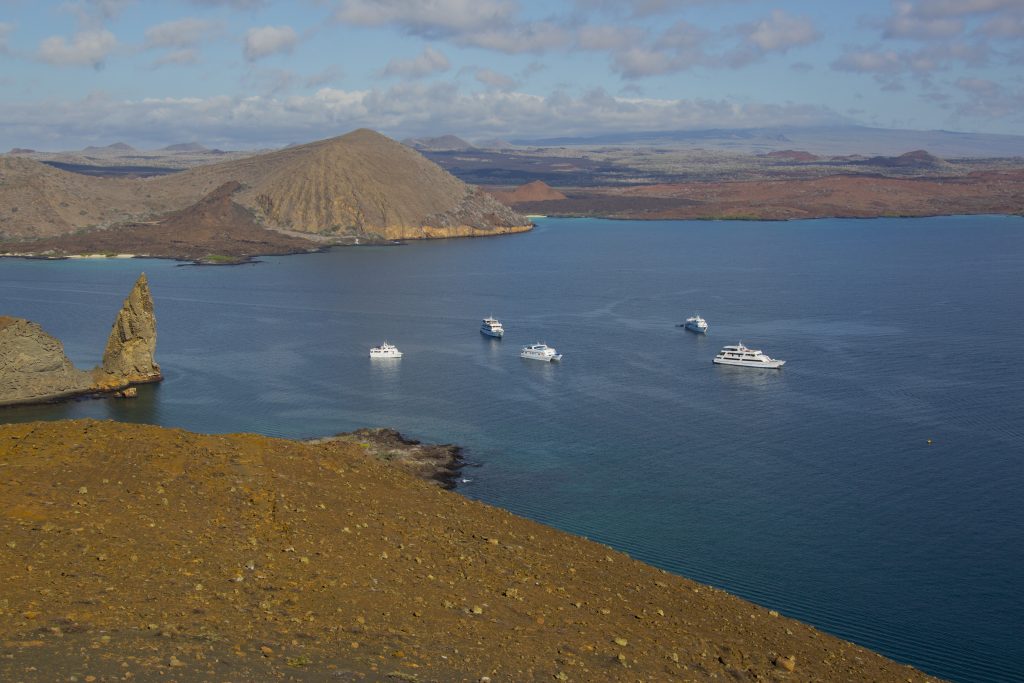
The lava field is martian, but there are a few hardy plants that are starting to make it green … slowly.
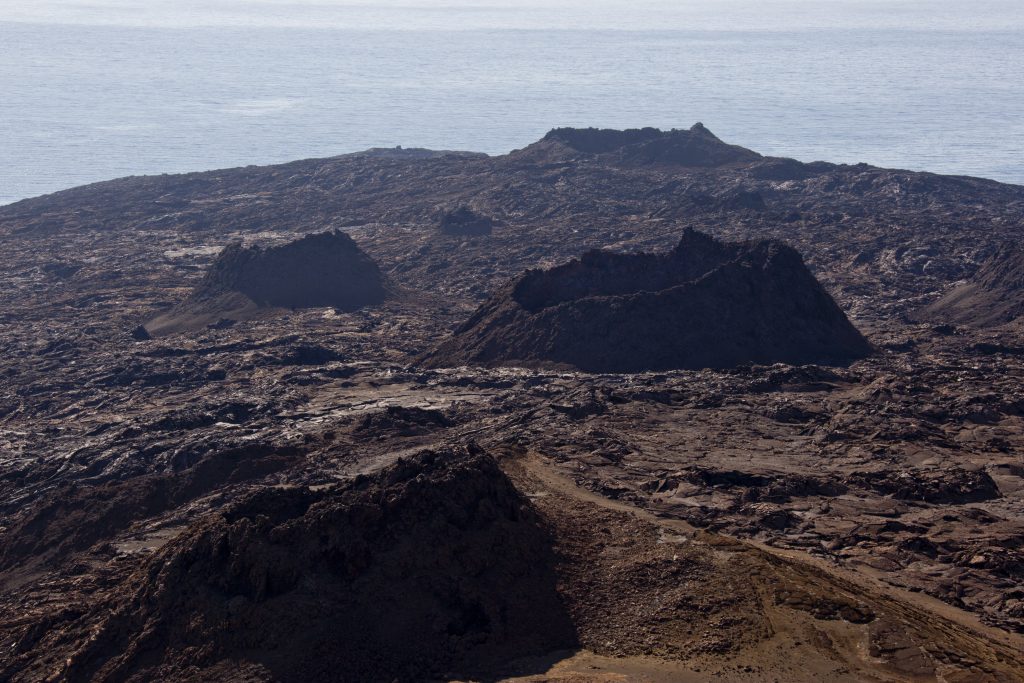
You can clearly see the basalt lava flow from a recent(ish) eruption on Santiago Island.
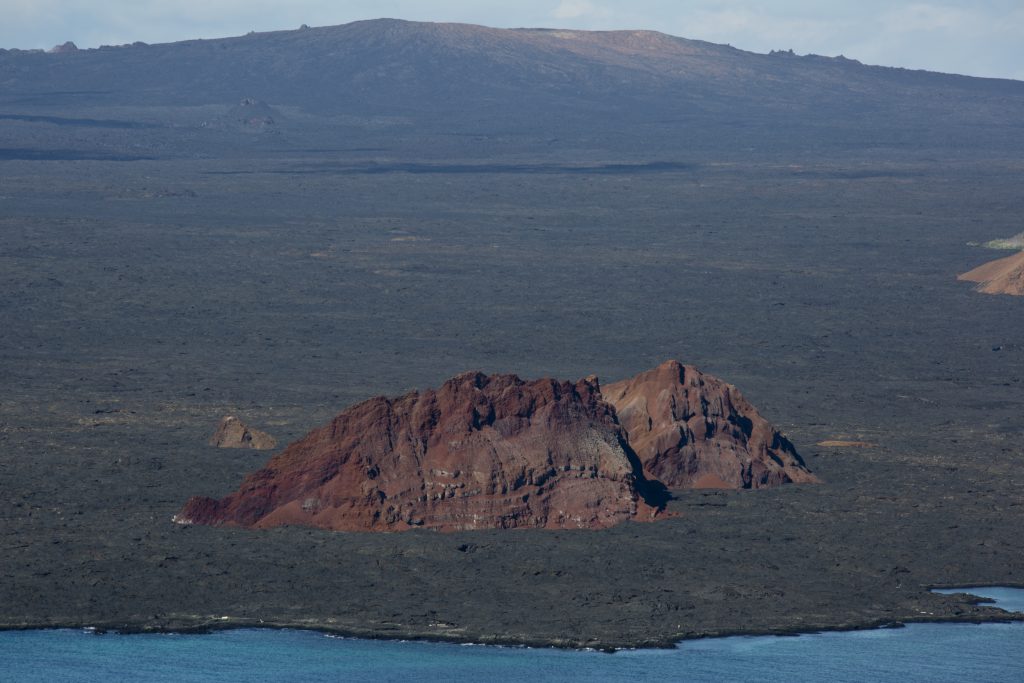
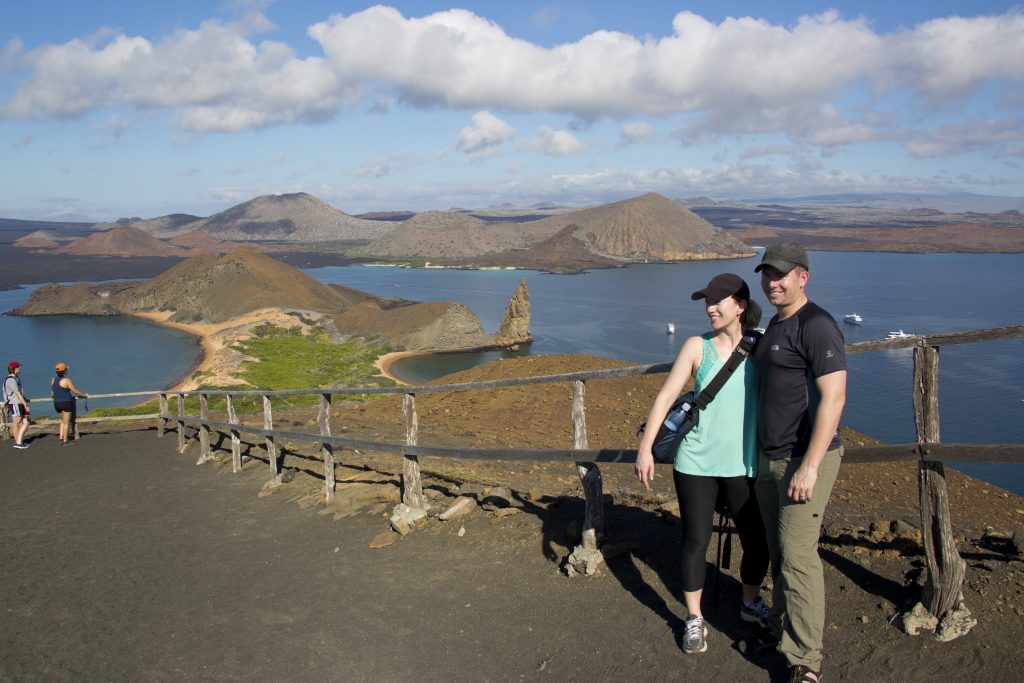
This dingy or zodiac or panga (our guides’ preferred term) was how we got from the boat to shore and often our vessel to tour close to shore.
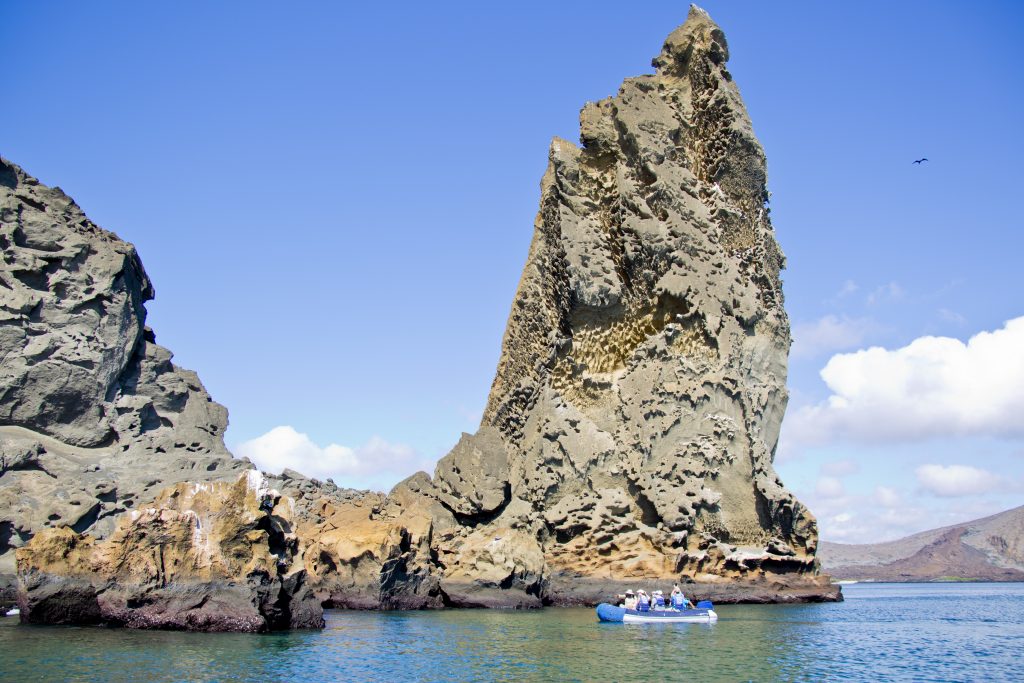
This is the Galapagos penguin endemic to the islands (meaning found nowhere else). It is also the only penguin that lives north of the equator in the wild. Its able to do that because the Galapagos islands have the Humboldt current with is cold water running to the islands. Also, this is the second smallest penguin in the world (after the Little Penguin in Australia/NZ). These penguins only grow to 49 cm (19 in) and weigh 2.5 kg (~5.5 lbs). Their small stature means they have lots of predators and the population was only about 1,500 animals in 2004, meaning they are an endangered species.
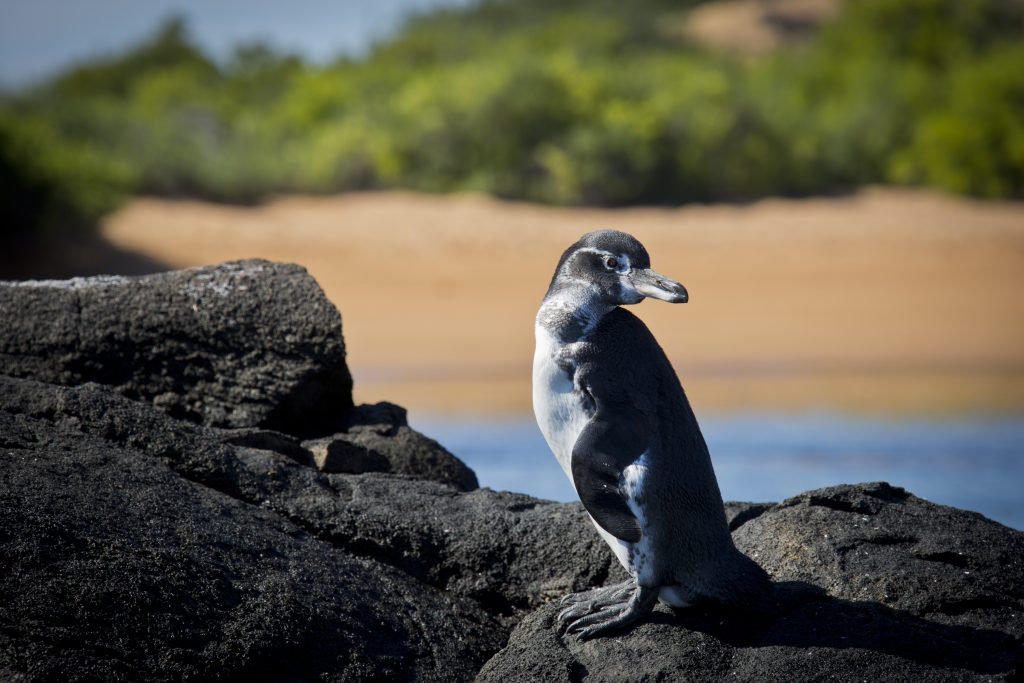
A marine iguana.

The famous Blue Footed Booby.
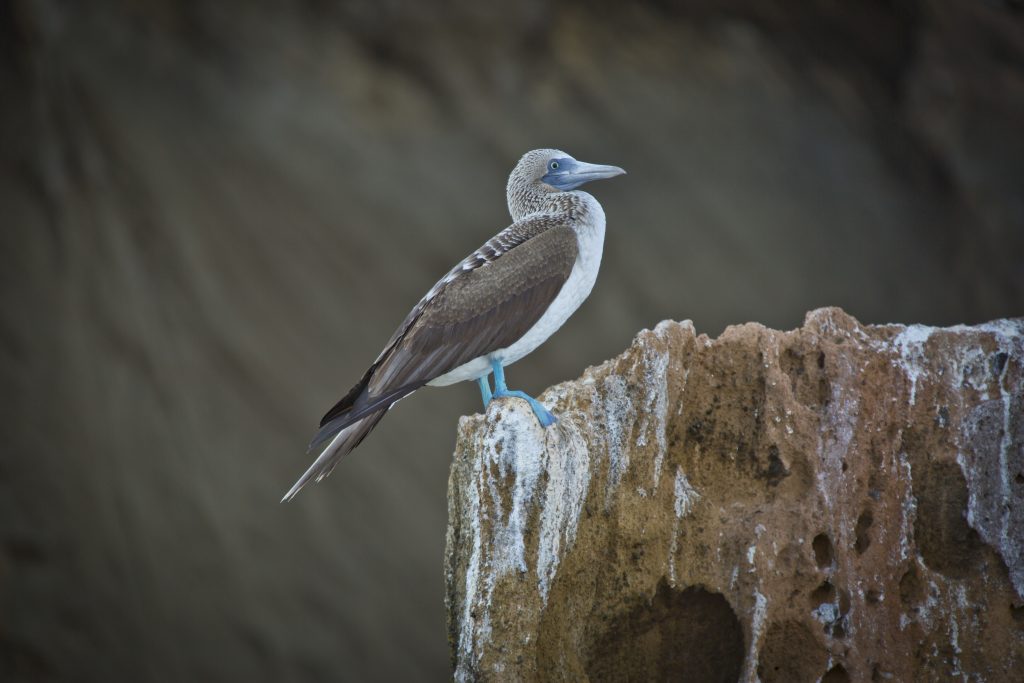
A great blue heron.
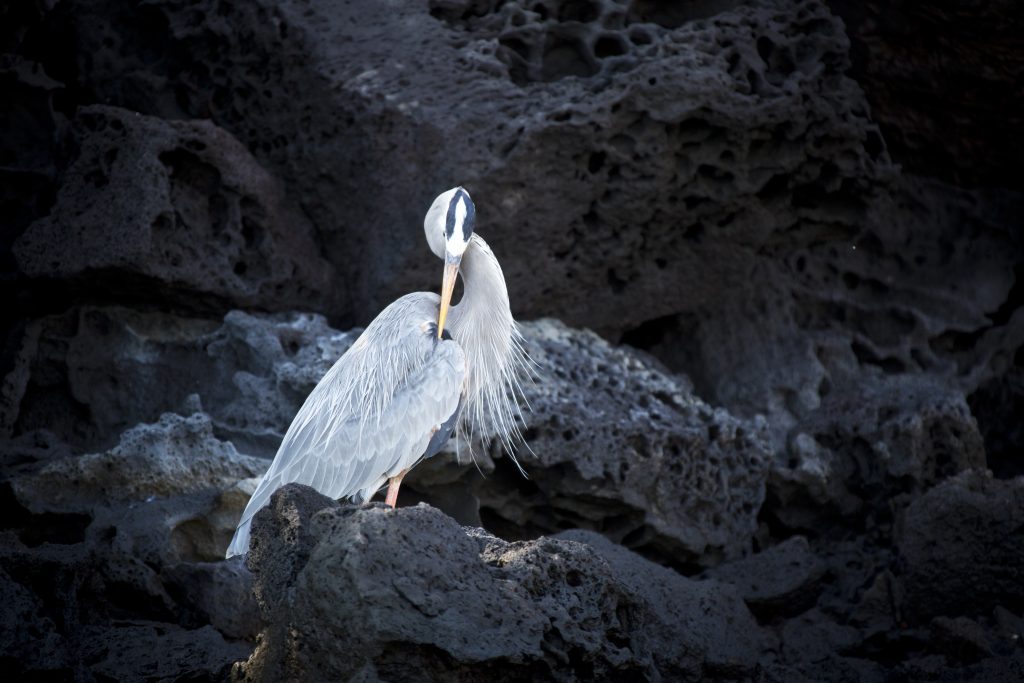
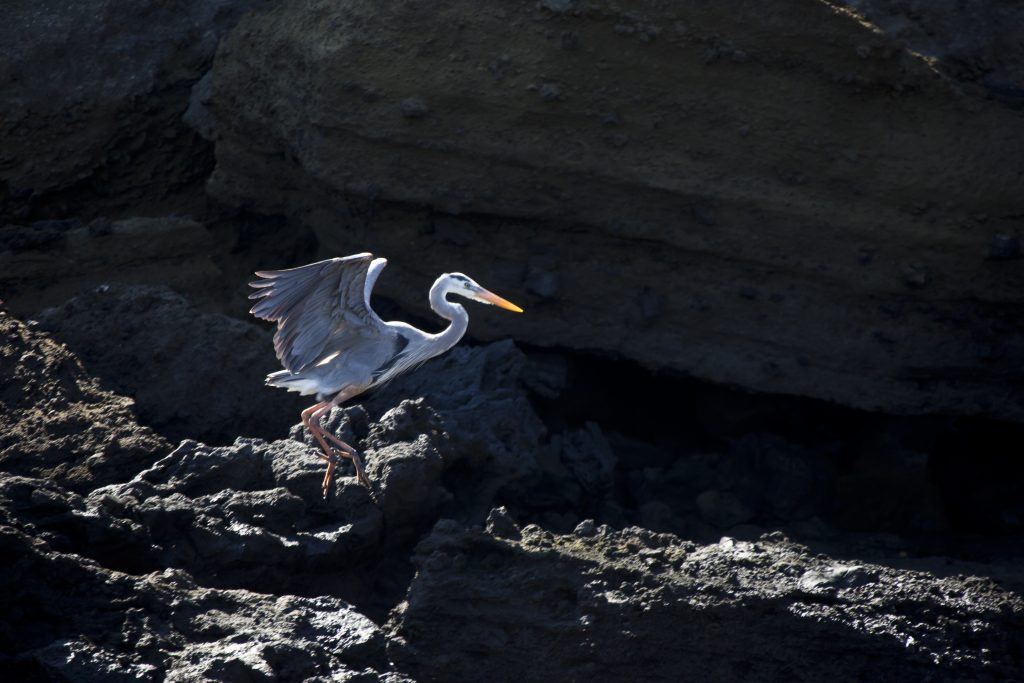
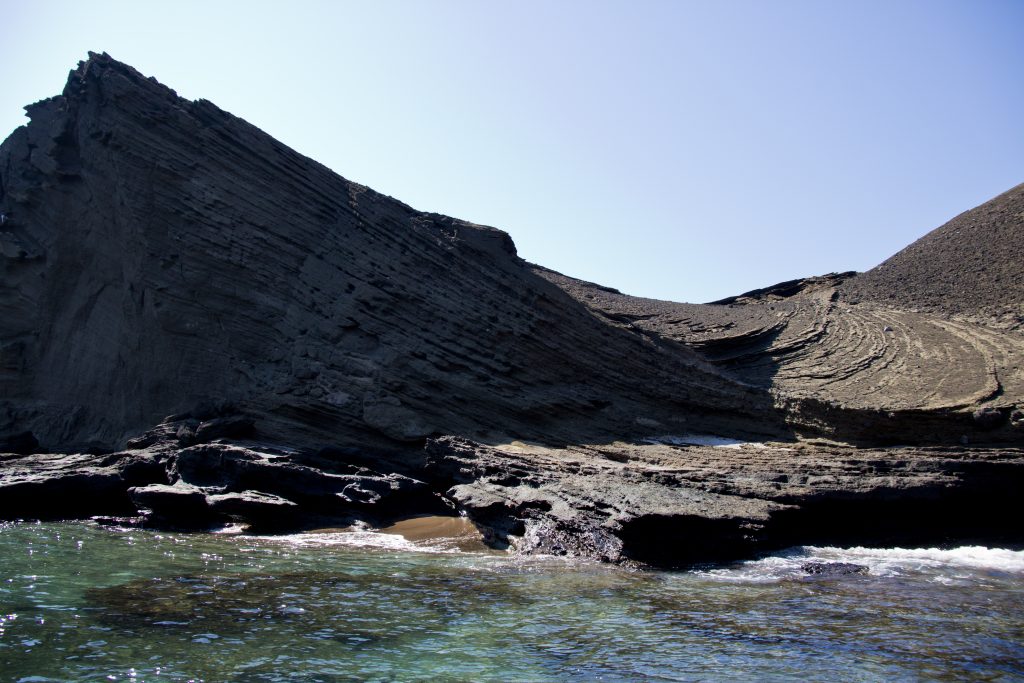
Now, back in the water to see the same rock from below the waterline. Sure enough, we ran into some friends right away.
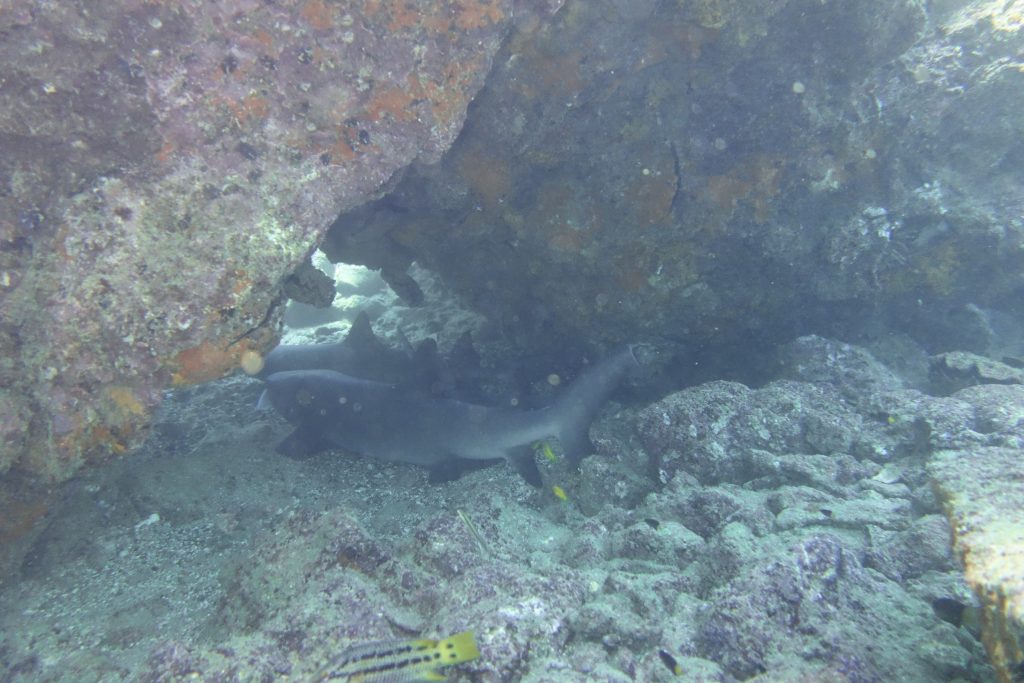
Another white tipped reef shark.
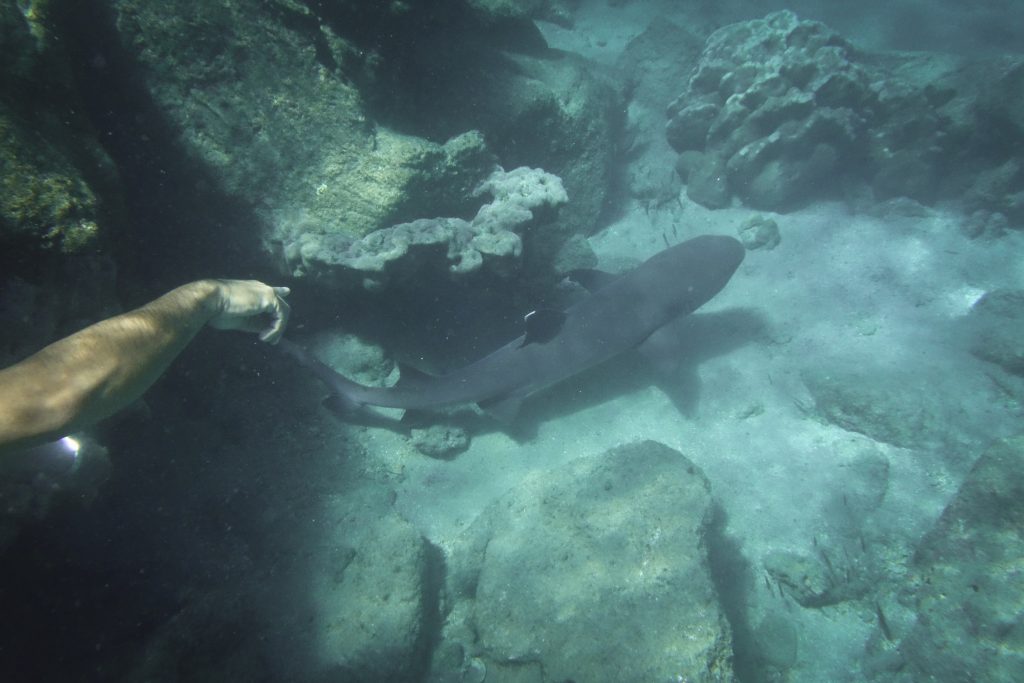
A Panamic Cushion Sea Star or knobby starfish. This species is found in the east Pacific to Hawai’i.

A school of razor surgeonfish.
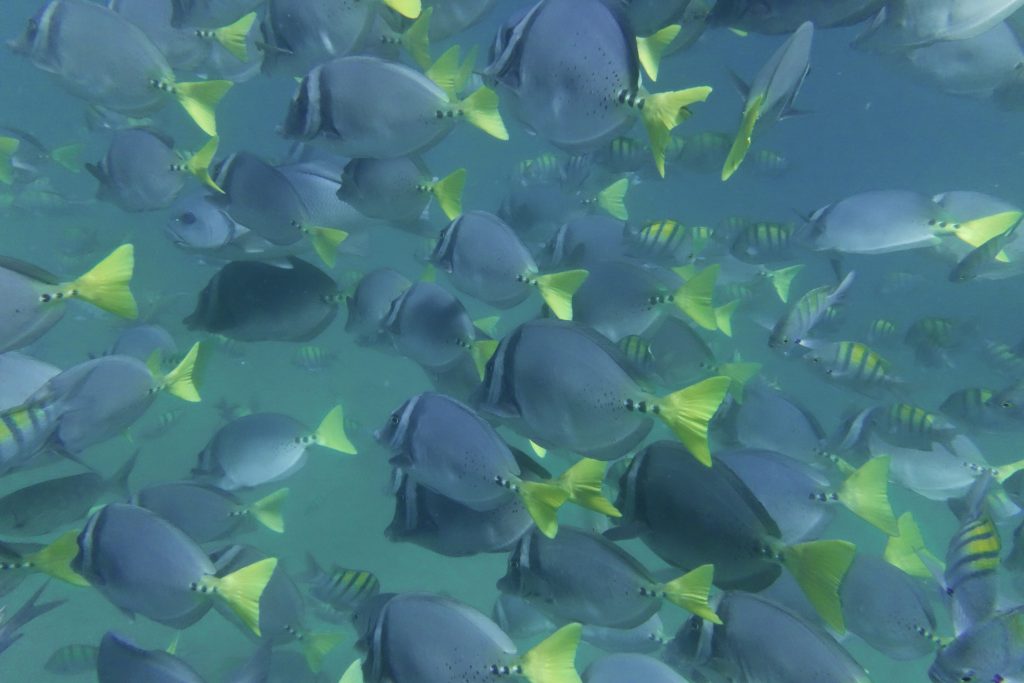
A stingray in the background with a porcupine puffer in the foreground.
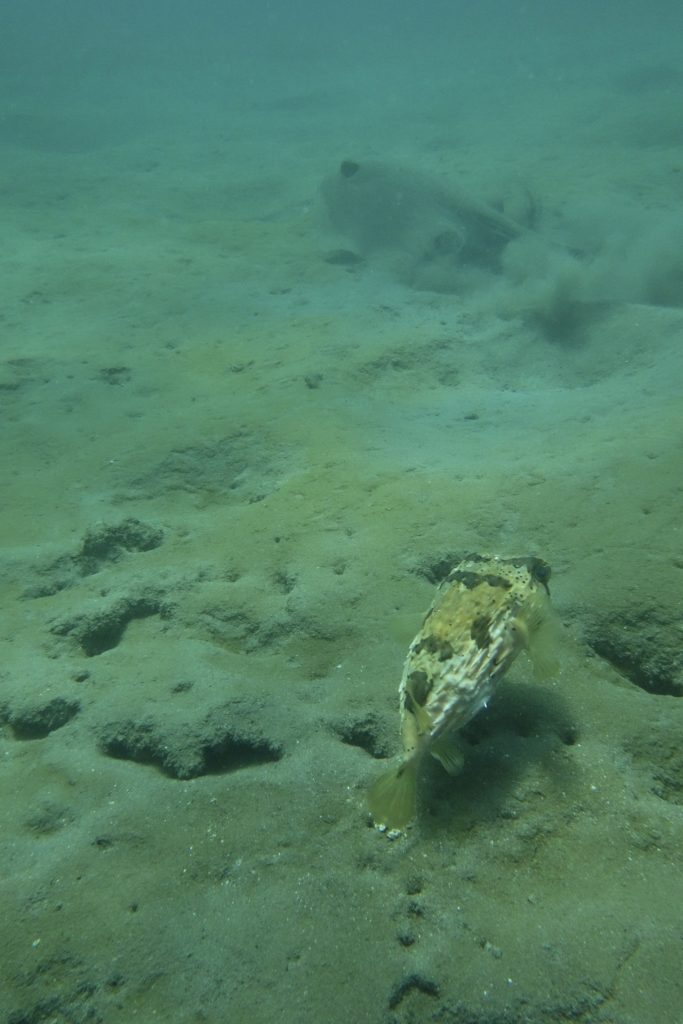
After this we hopped out of the water, were welcomed back on the boat with a tasty drink. We cleaned up, were served a delicious lunch, then a quick siesta and we were over on the other side of the island. We got back in the panga to do a little more snorkeling.
First up was green sea turtle swimming through nutrient rich water.
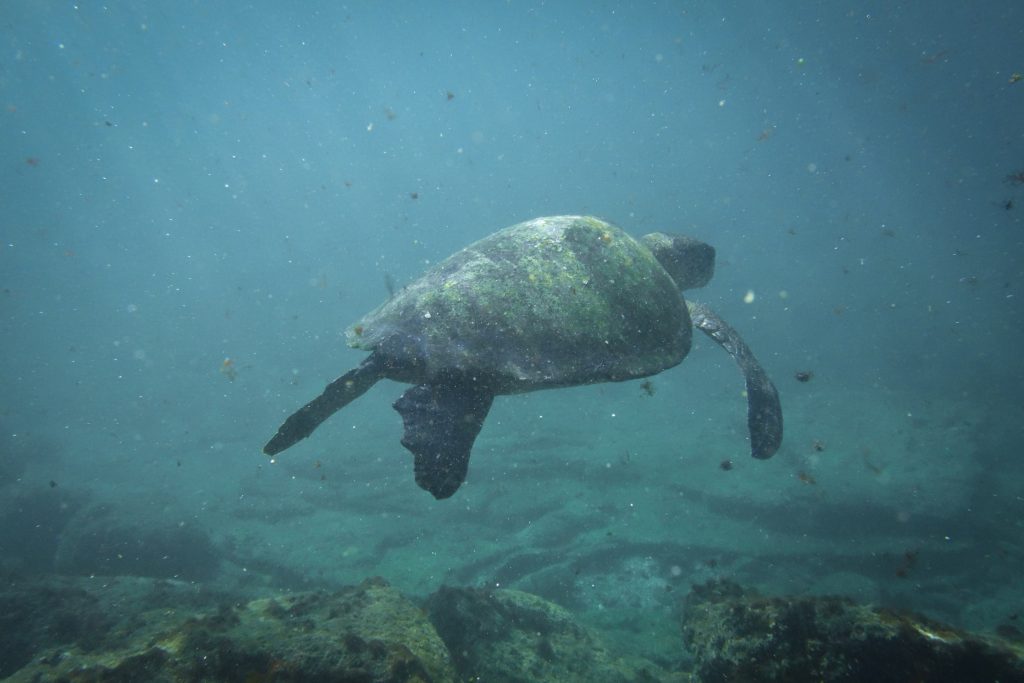
A Guineafowl Puffer.
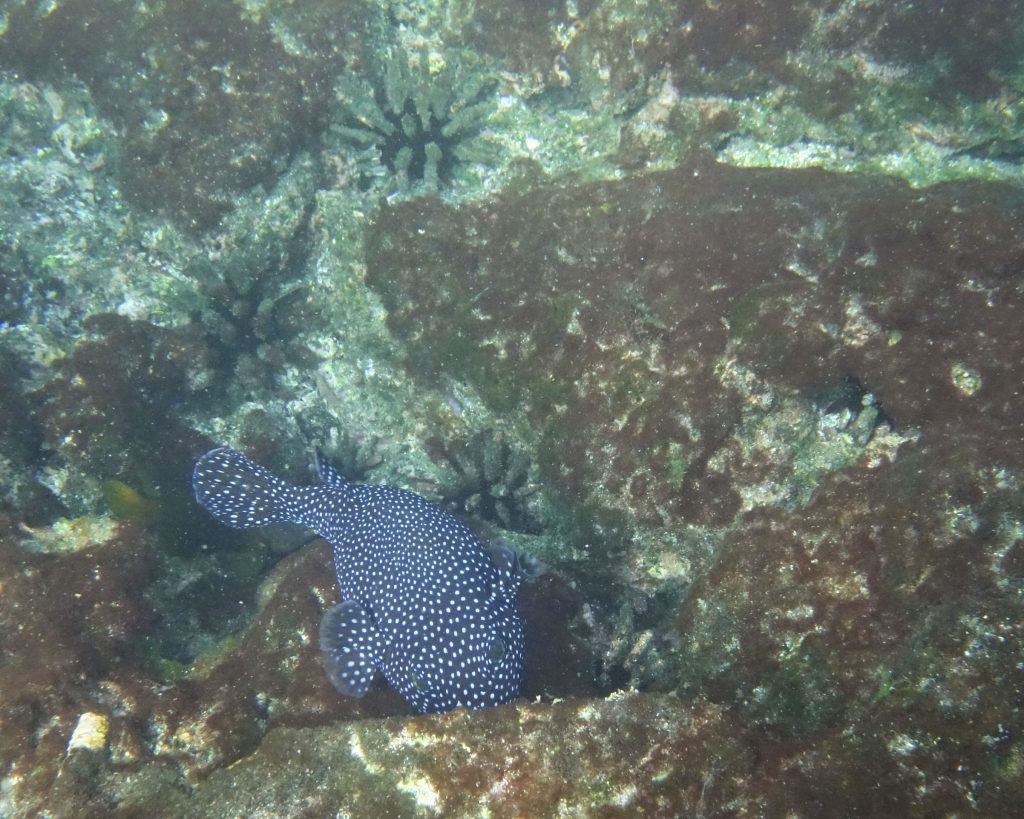
Red Spiny Lobster … yum! In fact, there are enough of these guys that there is a lobster season and each year 30-40 tons are caught in the Galapagos.
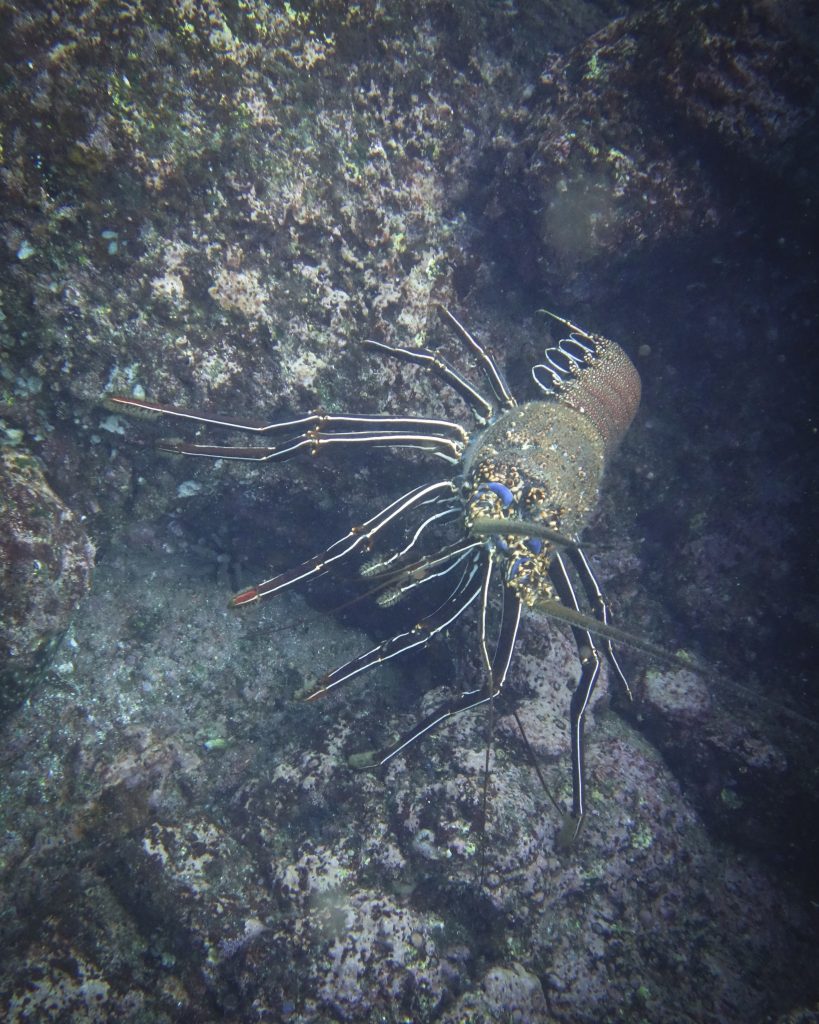
Back on shore and we dried off as well as we could, threw on our hiking shoes and went exploring (in a group and on the trail…). There were lots of the marine iguanas in Egas Port on Santiago Island. There were also remnants of buildings, as people had previously lived on the island.
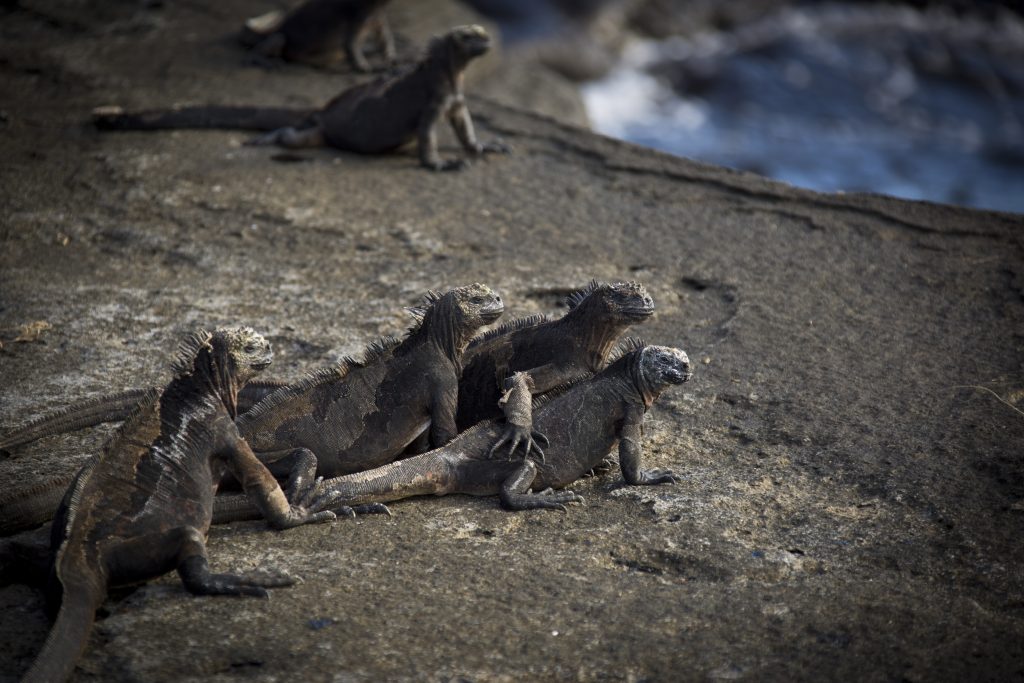
More Sally Lightfoot crabs that were nearly glowing in the afternoon sun.
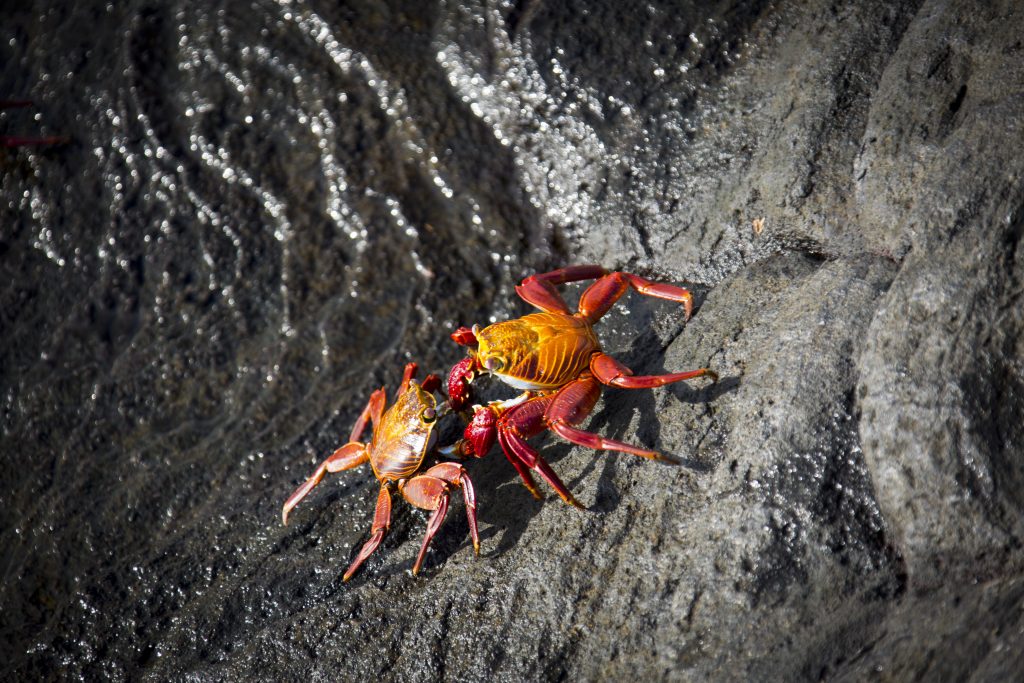
More sun worshiping by the marine iguanas. These lizards are also endemic to the Galapagos. It is also the only lizard that can forage in the sea, which makes it a marine reptile (sea turtle, sea snakes and saltwater crocodiles are the others). Apparently Mr. Darwin didn’t particularly like these iguanas either when he noted, “The black Lava rocks on the beach are frequented by large, disgusting clumsy Lizards. They are as black as the porous rocks over which they crawl & seek their prey from the Sea. I call them ‘imps of darkness’. They assuredly well become the land they inhabit.” Again, I disagree as we found them quite curious and entertaining to watch.
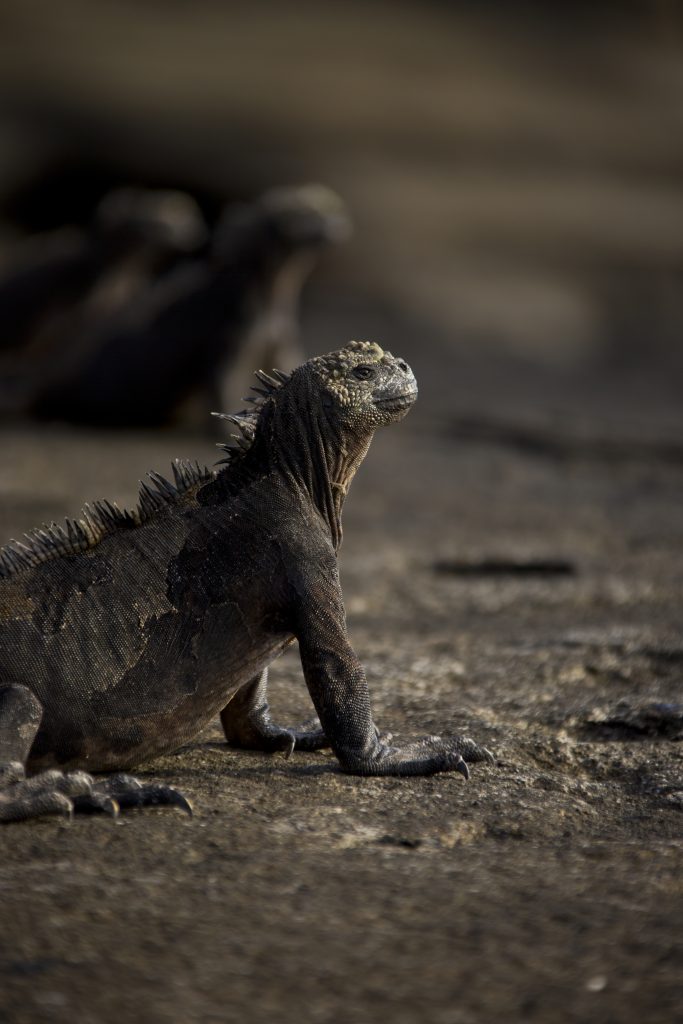

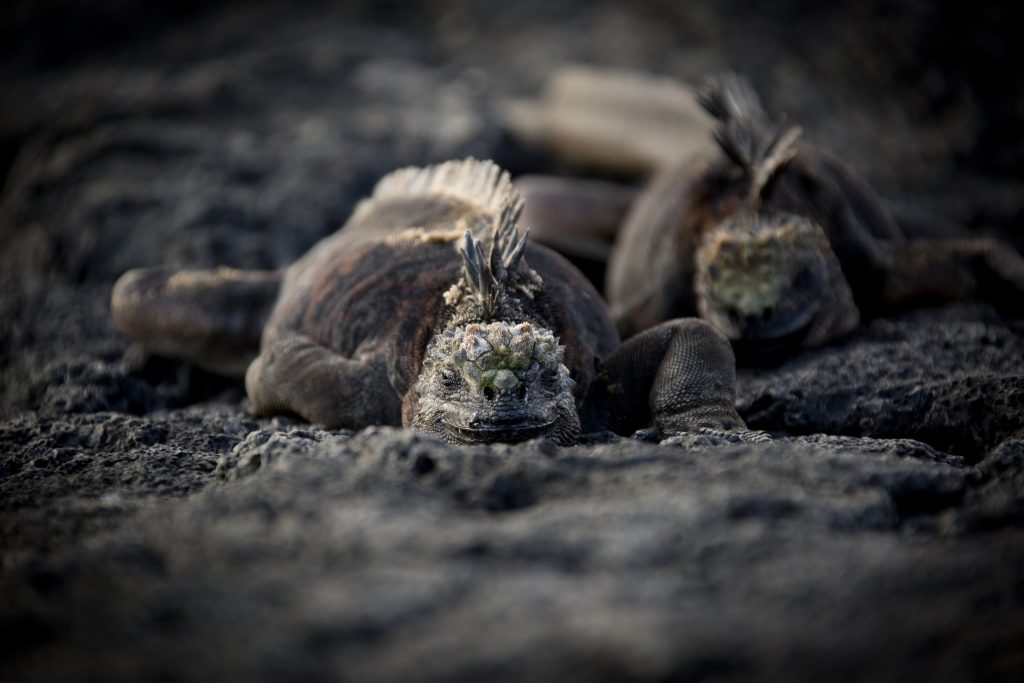
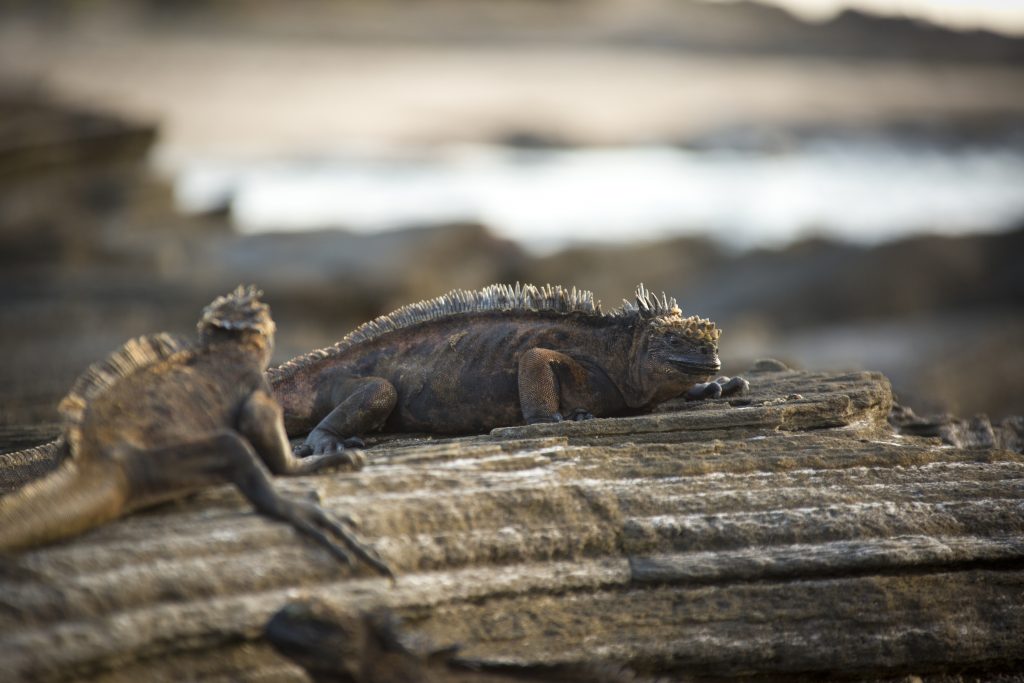
This guy needs a good meal of algae (their only food).
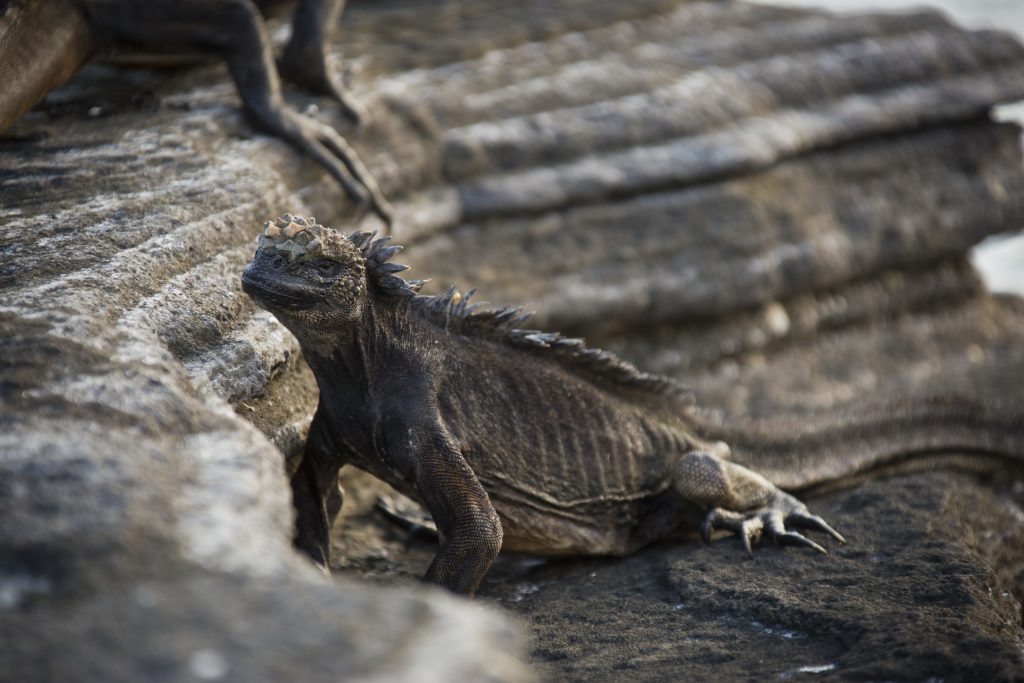
An American or Galapagos oystercatcher surveying his options with a Sally Lightfoot crab in the background.
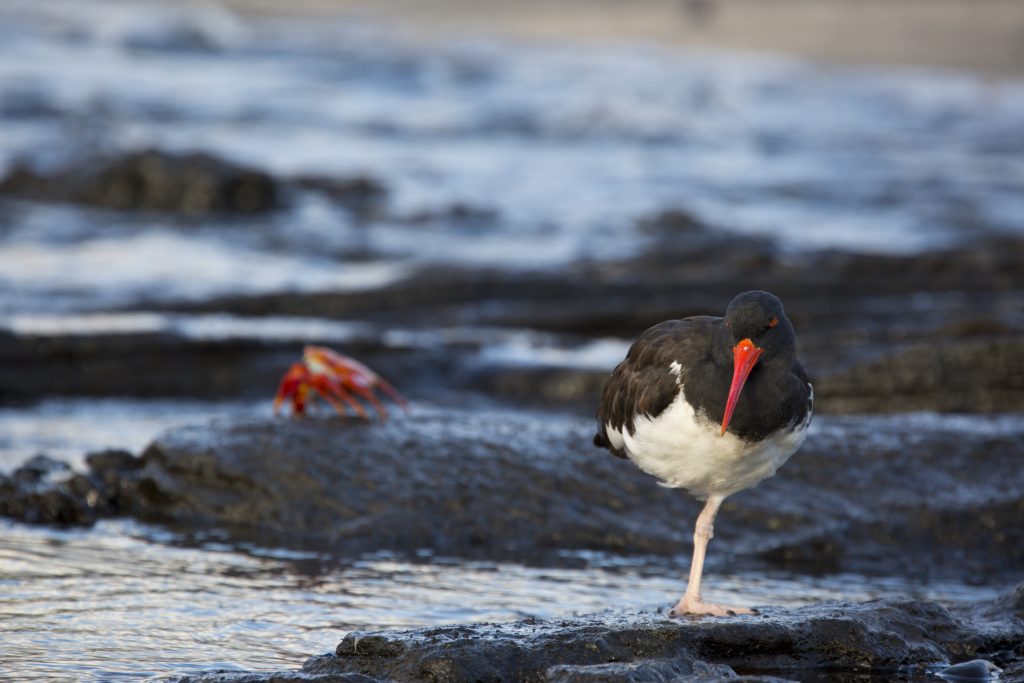
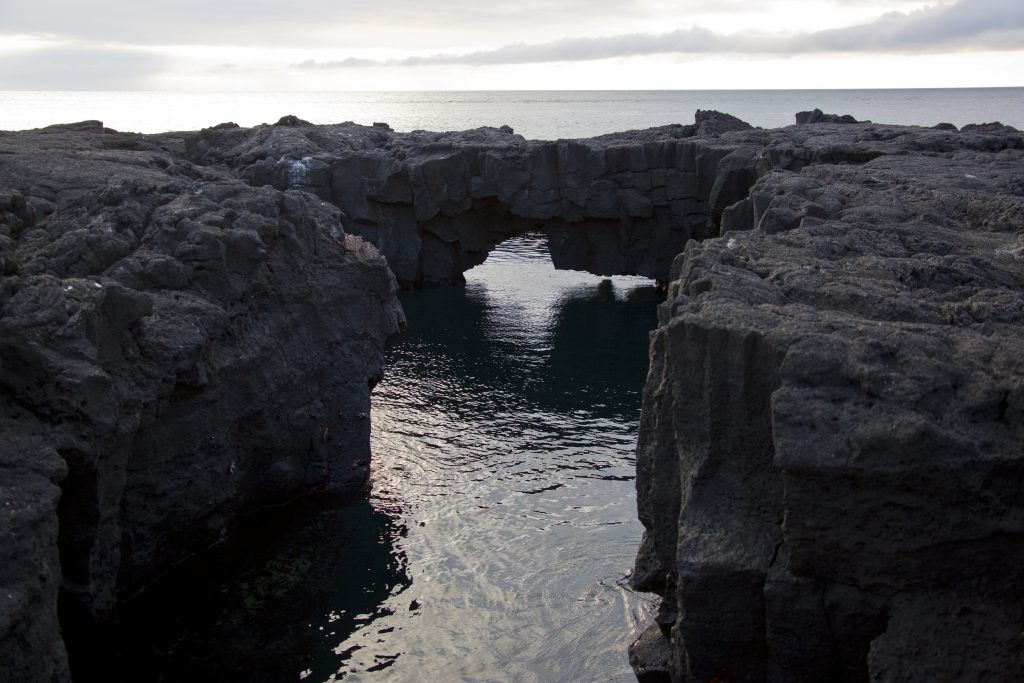
Galapagos Heron looking sagely at the water.
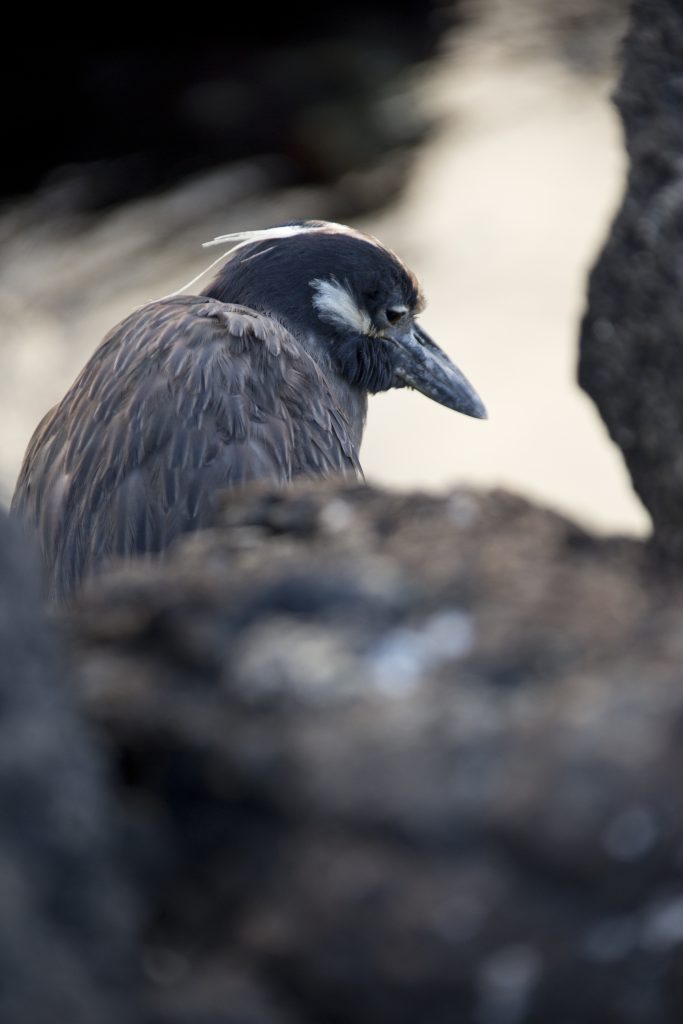
A Galapagos Fur Seal (or Fur Sea Lion). We didn’t see many of these guys, but this one was part of a small group lounging on the shore and enjoying the final rays of sunshine.
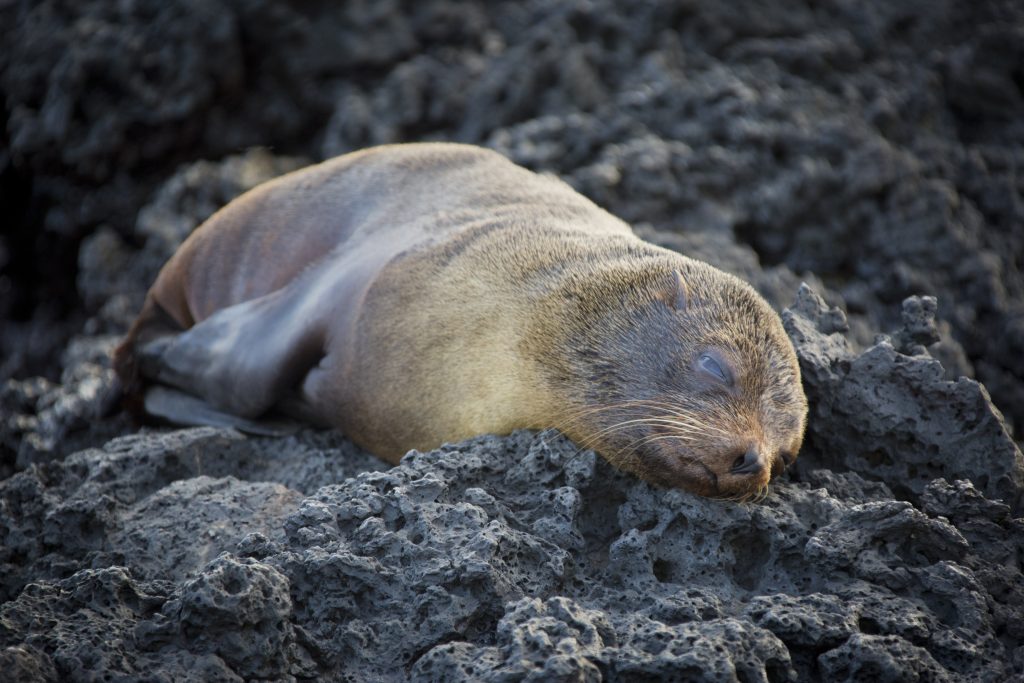
It’s amazing how the crabs stand out.
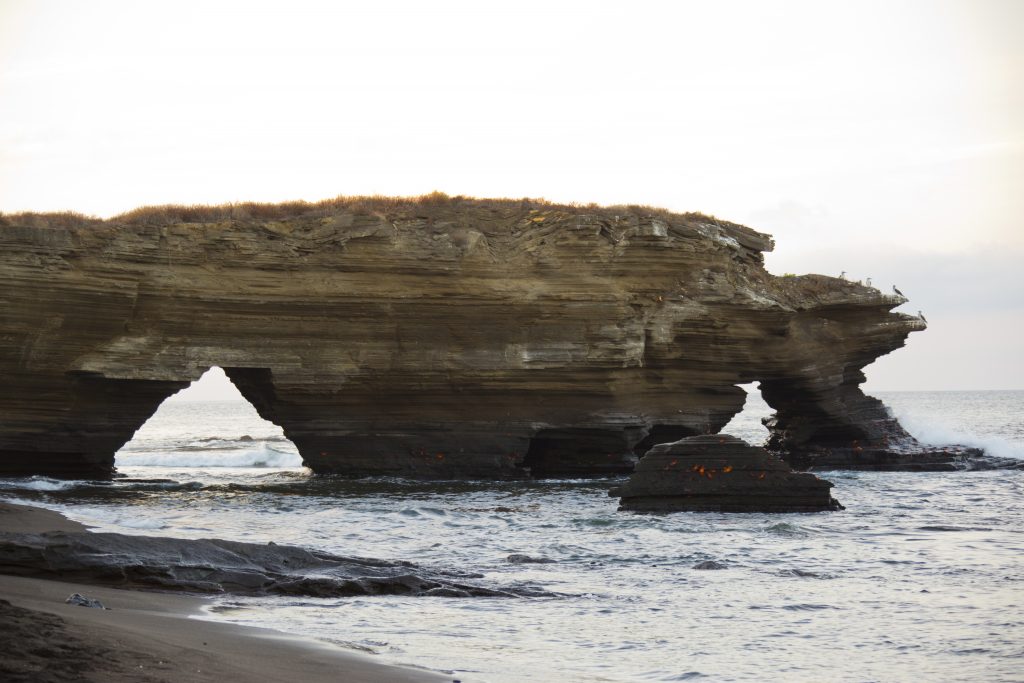
Perhaps my favorite sight of the day…
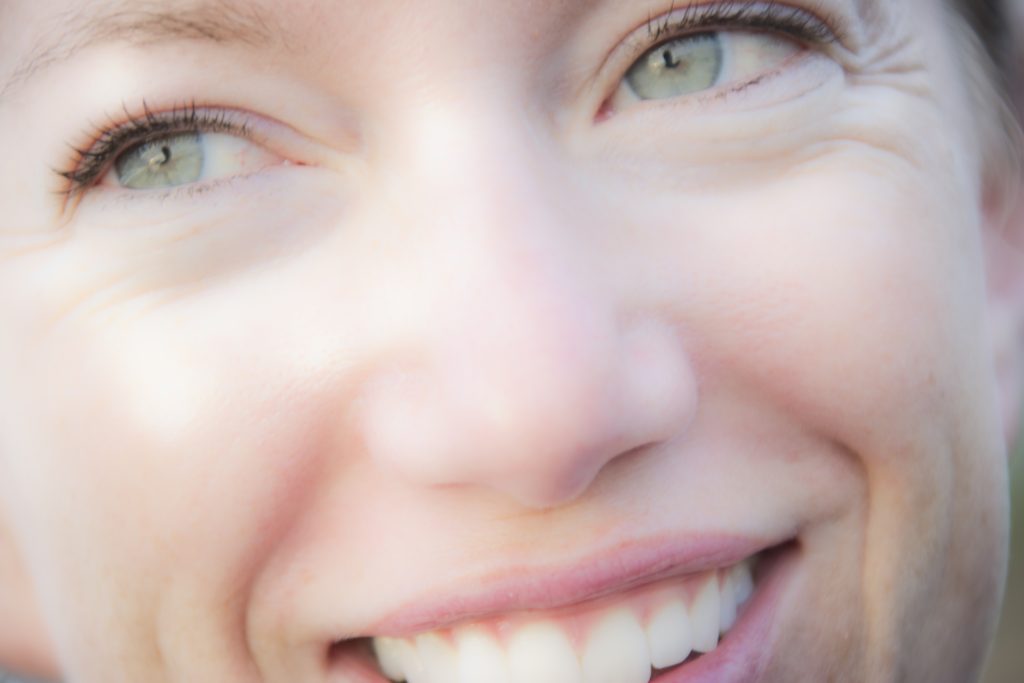
With that, we got back on board and made the nighttime trek over the top of the seahorse, Isabela Island en route to Tagus Cove the next morning.
Until then…
–Jim
